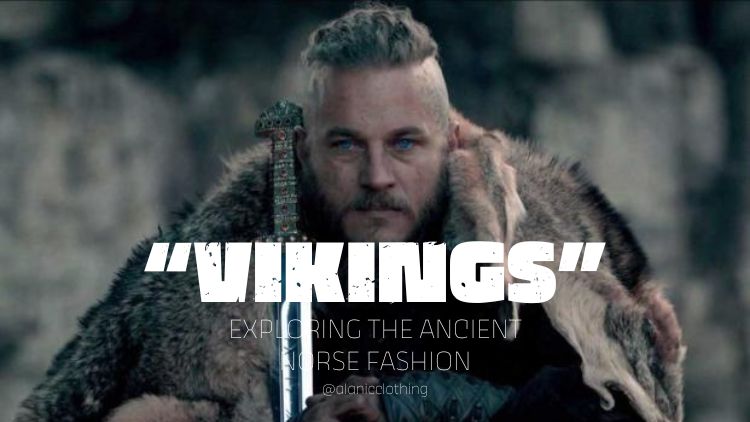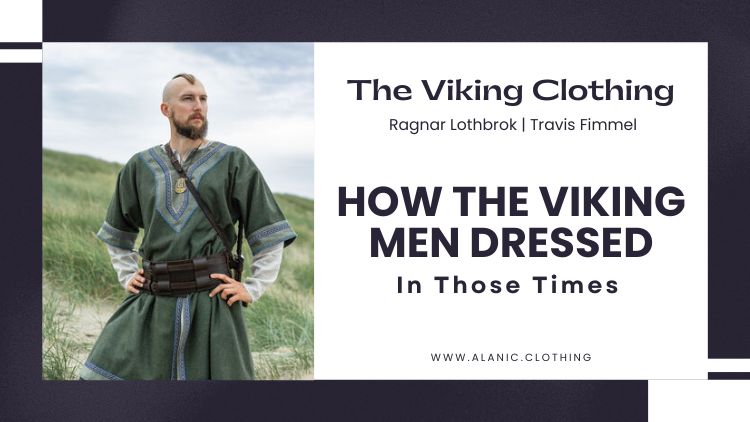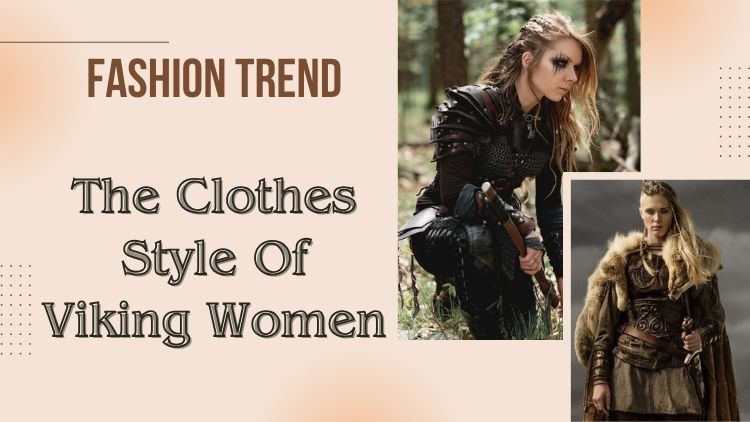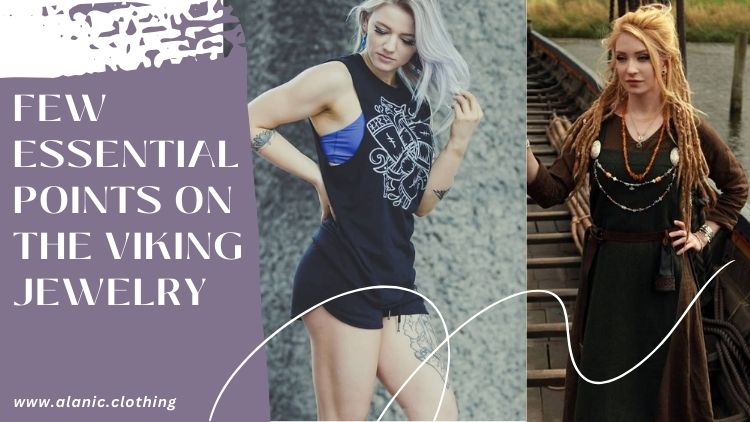
The ‘’Vikings’’: Exploring The Ancient Norse Fashion And The Popular Tv Series
When it comes to historical drama TV series, Vikings gained a lot of attention. Created and written by the talented English screenwriter, Michael Hirst, the engaging series largely follows the exploits of the legendary Viking chieftain Ragnar Lothbrok (portrayed by the skilled Australian actor Travis Fimmel).
Inspired by the sagas of a Viking, Ragnar Lodbrok, who is one of the most popular legendary Norse heroes and infamous as the scourge of West Francia and Anglo-Saxon England, the series transports you to the mysterious and brutal world of the main protagonist, Ragnar (both a farmer and a warrior) who longs to explore and raid the distant shores across the ocean.
Are you a fan of Fimmel and curious about the life of the Vikings, the ancient warriors? Is it like you have watched every season at least thrice? If yes, you are going to love this blog!
An Introduction To Viking Clothing
Viking apparel was more than mere clothing pieces as it embodied a culture’s creativity, resilience, class distinction, and connection with the elements of nature. As you get to know about their garments and fashion, you understand their influence on modern-day clothing.
Apparel from the ancient Viking period is rare. They often comprise little pieces of fabric preserved by chance. Just like how it is in the modern days, the Vikings at that time, dressed as per age, sex, and economic status. While the ladies dressed in strap dresses worn over undergarments, men preferred tunics and trousers. Viking clothing was constructed out of local fabrics like flax and wool, woven by ladies.
Findings from the graves of wealthy people show that some clothing items were imported! To display their wealth and status, the upper classes adorned themselves in gold and silk threads from foreign parts such as Byzantium. The Vikings added an extra element to their outfits in the form of furs from different animals and jewelry.

How The Viking Men Dressed In Those Times
Usually, a Viking male wore a cloak, tunic, and a pair of trousers. The tunic looked like a long-armed shirt minus any buttons, often going down to the knees. The man threw a cloak over his shoulders which was further secured tightly with the help of a brooch. The cloak used to be collected over his arm that he drew his axe or sword with.
There is not much known about the shape of the trousers but they were perhaps gathered up under the knee (a kind of plus fours). The plus fours must have needed puttees or socks wound around the shins.
For those unversed, puttees are a kind of legwarmers in which a narrow, long piece of fabric is wound around the legs to offer warmth. Men had a string or wore belts fastened around the waist to hold their clothing up. They wore leather boots or shoes as footwear.
A Viking man often carried a knife or a purse on his belt. Some men also sported caps that had either rounded or pointed crowns. These caps were crafted from fabric or skin.
How Were The Clothes Of Viking Women?
A Viking woman wore a strap dress that featured a smock or undergarment underneath. Crafted from a coarse fabric, it was a close-fitting dress, that used to be either sewn together or open at the sides. To offer it a shape, gussets were often sewn into the dress. Held up by a strap on each shoulder, the dress fitted over the chest of the woman. With the help of a shell-shaped brooch, the strap used to be fastened at the front. There was often a string of beads between the two brooches.
The brooches were usually constructed with delicate artistry, demonstrating fine craftsmanship. Their designs ranged from plain geometric patterns to detailed animal motifs showcasing the preference of the Vikings for intricate metalwork.

Also, aprons were commonly worn by women as part of their outfits. Typically, they came with decorative embroidery along necklines or hems, displaying detailed patterns inspired by nature like plants or animals.
The woman wore a smock or undergarment under her dress. As per studies, while Swedish Viking women were into pleated undergarments, Danish Viking women went for plain ones. So, you know even in those times, there was an element of fashion in the undergarments. Some women also wore a cloak over their shoulders which used to be secured with a small trilobite or round brooch. The dress and the cloak were decked up with bands of fur and woven borders.
To keep small items like strike-a-lights and sewing needles, women wore a belt around the waist with small leather purses.
Strike a light: A little piece of iron that is used to generate sparks
Viking women went for leather shoes.
Clothing Of The Children
Both in their type and look, the apparel worn by kids reflected those of their mother and father. Young boys wore tunics and trousers while young girls went for smocks.
Vikings Familiar With Waterproof Apparel?
The Vikings knew about the benefits of waterproof clothing and as a result, they were crafted from skins processed with beeswax so that they become soft and with fish oil to give them that waterproof finish. It’s believed that in the times of the Vikings, soaking clothes in animal fat generated a water-resistant material.
The upper-class individuals had contact with different parts of the world and this showed in their outfits. In particular, the Byzantine court style inspired the apparel worn by the Danish upper-class people. The Danish burials dating to the late 900s made it clear that the upper-class Vikings were part of the Christian European court circles, which had a connection with Byzantium. Silk was amongst the most prominent fabrics within these circles and it was linked with prestige.
Materials And Dyeing
The clothing pieces were woven in different colors. By boiling the fabric with different color-yielding plants, colored yarn could be generated in the Viking age. The colors that were mostly found in the Viking period apparel are blue, purple, red, and yellow. The red color was linked with strength and power and was commonly worn by the warriors on the battlefield. The color blue was often associated with the high-class Viking people as it came from either the dye Indigo or the local plant woad, which was bought abroad.
One of the most common fabrics used due to its abundance in Scandinavia was wool. This material, known for its insulating properties even when wet, offered warmth during long voyages across unreliable waters. These people also made use of animal skins like those from bears and seals. For added protection against the harsh weather, they were smoothly transformed into capes or cloaks.
Flax used to be an essential plant for the production of Viking apparel. To generate enough material to make a tunic, it’s said that more than 20 kg of flax plants were needed. The entire task of sewing and stitching probably needed almost 400 work hours! Imagine!
A Few Essential Points On The Viking Jewelry
Just like in the modern days, people from that period believed that an outfit is incomplete without some jewelry.

The Viking jewelry was crafted with the help of different materials like iron, bronze, silver, and gold. Materials from nature like amber and animal bones were also used. Every piece carried a belief, a symbol, or a story. Viking jewelry represented values such as loyalty and honor, wisdom and knowledge, heroism and bravery.
Common types of Viking jewelry included necklaces, rings, armbands, amulets, and pendants.
- A simple necklace often featured precious stones, beads, amber, and other decorations.
- Pendants mostly resembled miniature weapons. In fact, there were different types of pendants— round pendants, stick pendants, tool pendants, cubic seat pendants, etc.
- Most Viking rings were made with an open end so that they could be adjusted to fit a new wearer anytime.
- Plain armbands were used as a sort of wallet! Men also used to present some armbands to their wives as a sign of love and loyalty.
Thanks to their unusual and timeless style, such jewelry has made a comeback in recent years. These items with their symbolic meanings and detailed designs add a touch of class and history to modern fashion. Many people make them a part of their ensemble to show their appreciation of this ancient culture.
The Costumes That Blew Minds In The Tv Series “Vikings”
Hollywood costume designers often take creative liberty when it comes to the portrayal of characters.
As said by Joan Bergin– “the era when every detail had to be historically accurate is gone. You must try to learn what is correct and give a modern sensibility to it. The more I work, the more I believe that”.
Some of the most notable costumes in the famed TV series were:
- In one of the scenes, Lagertha wore an orange woolen maternity dress and a bilberry-colored lime-green cape, and her husband, Ragnar featured black leather pants and an elaborated, decorated, molded black leather vest embossed with his insignia, the raven (symbolizing his descent from the great Norse God, Odin) and they looked perfectly convincing to many.
- The man who was the earl of Kattegat before Ragnar Lothbrok was Earl Haraldson. Coming with a limited imagination or foresight, he was the man who tried to stop Lothbrok from raiding the rich lands to the West. In one of the scenes, he can be seen projecting his leadership role quite skilfully in an eye-catching quilted, molded black leather vest over a grey tunic (known as a kyrtill), generally, a linen made from flax.
- Captured by Ragnar and company in Season 1, Athelstan is a young Christian priest. His simple monastic apparel is what set him apart from his detailed-attired Pagan captors.
- The maroon-hooded cape with a fur-trimmed hood enhanced the look of Siggy, the wife of the Earl (played by Jessalyn Gilsig) in ‘Vikings’.
- Worn by Ragnar’s wife Lagertha, the berry-dyed creation was something. For added texture, Bergin shredded Yak wool at the neckline.
Travis Fimmel’s Most Iconic Outfit From The Series
If you are into experimental fashion and want to know about the best look of Fimmel (Ragnar Lothbrok) from the series, keep reading!
Fimmel, throughout the series, has worn various outfits. However, the most classic one (as voted by many) is his Vikings battle outfit. It’s this particular ensemble that is most linked with his interesting character.
![]()
So, What Does It Consist Of?
It comprised a dark brown Vikings top with matching dark brown Vikings pants. It also demonstrates a dark brown armor vest that Ragnar mostly wears to his battles and the signature fur shoulder cape. The set also comprises a black leather belt. Dark brown leather boots finish the set, giving it the perfect touch.
These days, you will find plenty of online and land-based stores offering them. Grabbing such an outfit and getting the look right along with the hairstyle, you can make a bold style statement anywhere you like.
Of course, throwing on such an outfit, you can kill it at any Halloween party! If you wish to accessorize the look, then all you will need are a silver bracelet, a Viking drinking horn, and knee-high leather boots. The cape will do a great job of keeping you warm on a chilly Halloween night. For an authentic touch, you can fasten it with a brooch.
For your bang-on transformation into the legendary character for the spooky day of the year, here are some additional tips:
- Lothbrok was known for his piercing, intense gaze, which was a reflection of his strategic thinking and determination. Watching the episodes again, you can practice it. While engaging in a conversation with people at the party, ensure to maintain eye contact to exude the leadership and confidence of the great warrior.
- Fimmel’s character throughout the series evolves as he faces different battles and challenges. You can show it through you via certain emotions. For instance, you can be fierce or stoic in moments of intensity or conflict. You can let charisma and warmth shine through in light-hearted social interactions.
- In the series, Ragnar has a very unique way of speaking, which adds more depth to this character.So, you can include expressions and phrases from the show in your conversations.
Both the Viking fashion and the TV series are quite interesting, isn’t it?
 Catalogue Download
Catalogue Download BECOME A DISTRIBUTOR
BECOME A DISTRIBUTOR
 Mail Us
Mail Us











